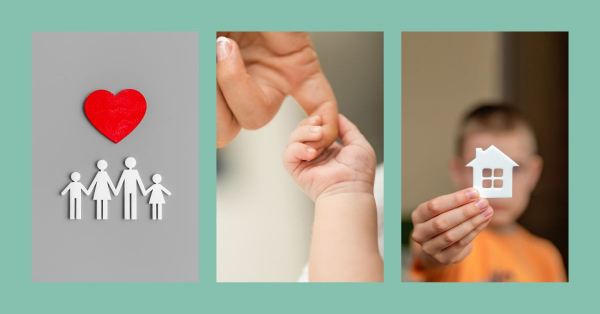Preparing for the Arrival of Your Child – Part 2
Safety
Babies to Age 2
For babies up to age 2, safety measures appear more obvious than they do for older children. Thinking about safety is equally important for all age groups. Begin by:
- Plugging electrical outlets with caps.
- Installing smoke and carbon dioxide detectors.
- Buying enough fire extinguishers for the size of your home.
- Installing cabinet locks.
- Placing sharp objects, poisons, cleaners, and medicines out of reach.
- Checking recall and safety web sites to see if any baby furniture has been recalled.
- Placing emergency telephone numbers by the phone.
Your social worker will also make suggestions, and may give you a checklist for further safety preparation.
Age 2 to 7
Building on the above list, you will need to take some additional steps for children ages 2 to 7 years:
- In each room the child will have access to, kneel down in the center of that room and turn slowly in a circle. You now have a child’s eye view. Remove anything that could be dangerous in the hands of a curious child. It only takes a moment for a child to get into mischief. For example, electric paper shredders should not only be unplugged, they should be stored away until needed.
- There is no such thing as a safe hiding place for a gun. If you must keep a gun or rifle, invest in a locking steel gun cabinet and hide the unmarked key or combination well. A locking glass-fronted gun cabinet is not safe. Glass can break. Every year, children die in gun accidents in homes where the parents were sure the gun was well hidden.
- Make sure the fence around the pool is high enough and the gate locks.
- Books, breakables, and knick-knacks on lower shelves may need to be moved temporarily to other locations. Two year olds love to empty shelves and cabinets. Make sure your bookcases do not become “top heavy” as a result, or they can topple over.
- Move make-up, medicines, and razors out of any bathroom to which the child will have access. Place a safety mat into the tub and a padded cover over the protruding water spigot. Bathroom and tub accidents are a leading cause of injury for young children.
Over 7 – including teens
Building on the above list yet again, consider the following when preparing for the arrival of all children over the age of 7, including teens:
- Go over every square foot of your home and yard with your new child and explain the rules. For example, if tree-climbing is allowed, show the child exactly which trees are “approved.” Explain how high he or she is allowed to climb and under what circumstances, such as, under adult supervision only. Children feel more secure when they know the rules and the limitations right away.
- Password-protect your computer and place guardian software on the computer to which the child will have access. (Never place computers and telephones in the child’s bedroom. These items are safer and less isolating when they are used out in the open in the family room or kitchen.)
- Get rid of all alcohol or store it and prescription medications in the master bedroom under lock and key. If the child has a history of drug abuse or experimentation, lock up all medications and aerosol cans, including cans of spray paint that may be stored in the garage, to prevent “huffing”.
- Use deadbolt locks for rooms or cabinets to which you want to restrict access. Ordinary doorknob locks can be easily picked.
- Talk to the child’s foster family at length and often about how you can make your home safer. No one is more of an expert on your child than the family your child lived with most recently.
Copyright © 2003 Rita Laws and Nancy Ashe. All rights reserved. No part of this material may be reproduced in any form without written consent.







